SLVUCN9 September 2023 TPSM365R15
6 Layout
The top silkscreen (that is, J4) differs between the TPSM365R15EVM and TPSM365R15FEVM, which is the only difference between the layer plots (no routing).
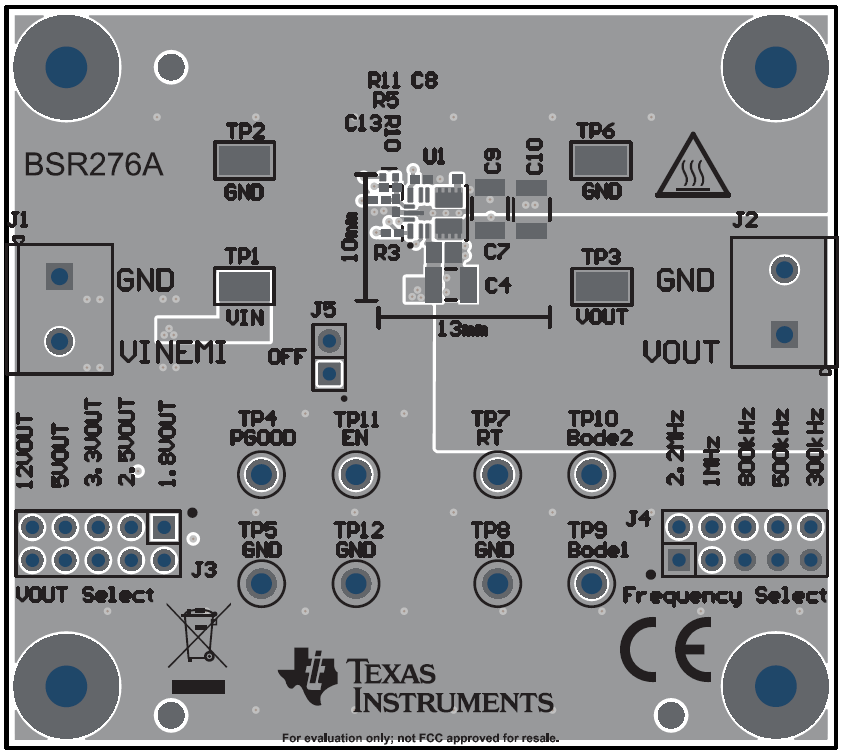 Figure 6-1 PCB Top 2-D (TPSM365R15EVM)
Figure 6-1 PCB Top 2-D (TPSM365R15EVM)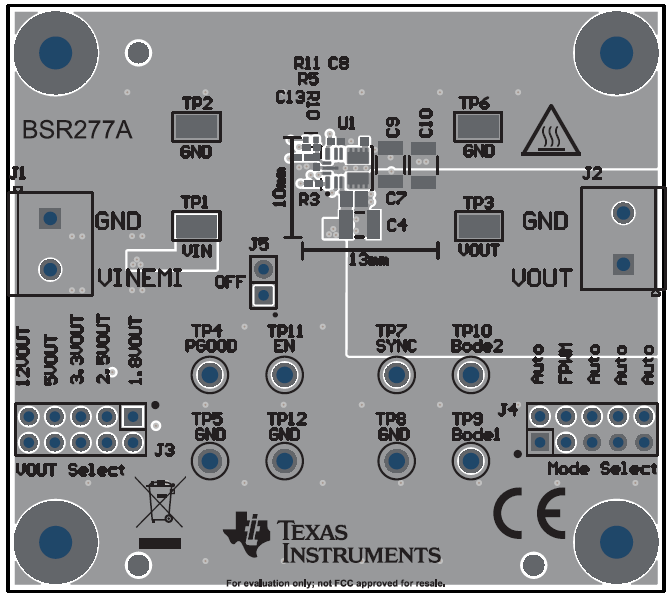 Figure 6-2 PCB Top 2-D (TPSM365R15FEVM)
Figure 6-2 PCB Top 2-D (TPSM365R15FEVM)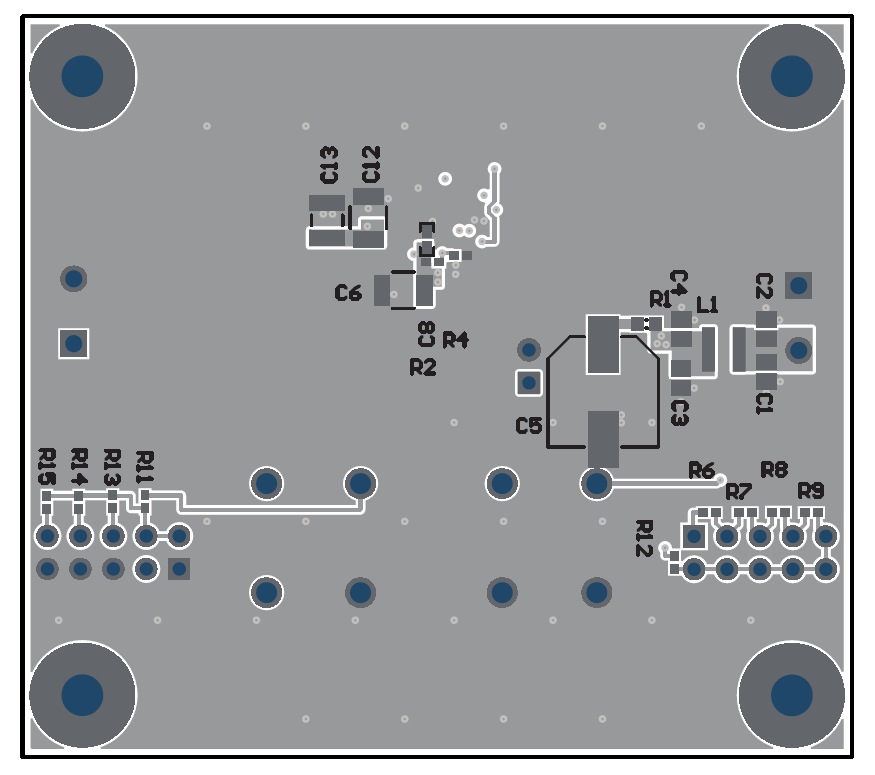 Figure 6-3 PCB Bottom 2-D
Figure 6-3 PCB Bottom 2-D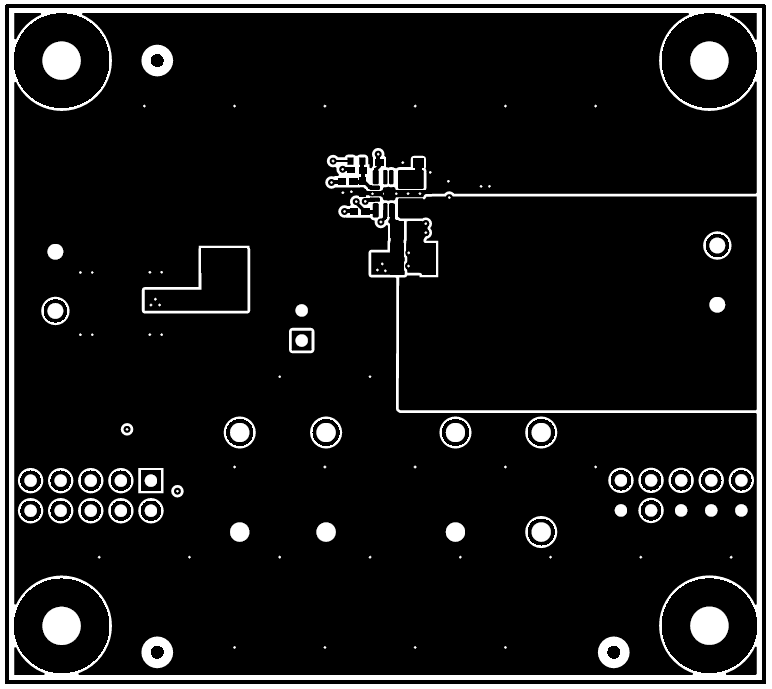 Figure 6-4 Top Layer
Figure 6-4 Top LayerReserved for solid ground plane for low-noise and optimized thermal design.
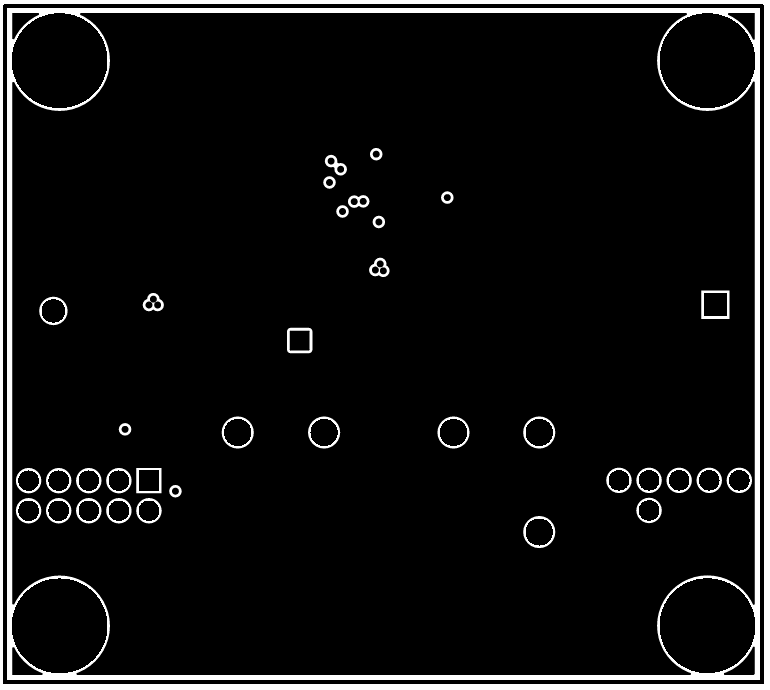 Figure 6-5 Mid Layer 1
Figure 6-5 Mid Layer 1Primary routing layer
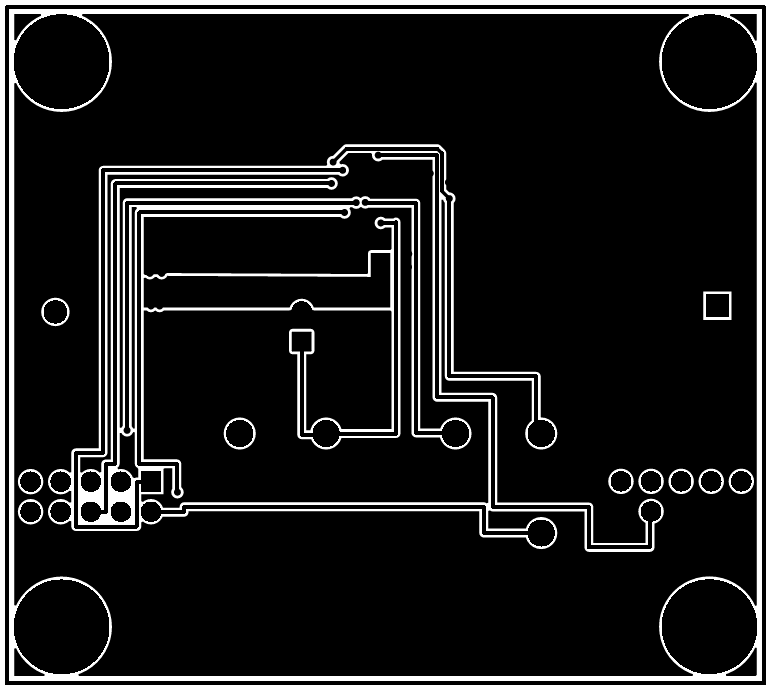 Figure 6-6 Mid Layer 2
Figure 6-6 Mid Layer 2Reserved for PI filter and non-critical passive component placement (minus input capacitor). An input capacitor is placed on the bottom side of the PCB as this placement provides a slightly lower input loop inductance. A single layer implementation is satisfactory as well.
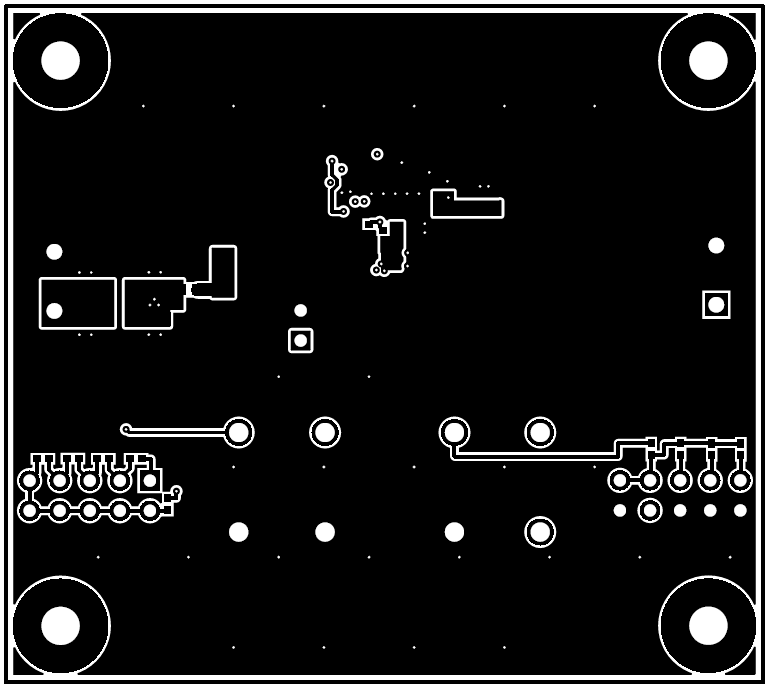 Figure 6-7 Bottom Layer
Figure 6-7 Bottom Layer